“When we hear the formula ‘once upon a time,’ or any of its variants,” wrote Angela Carter in her introduction to her Book of Fairy Tales, “we know in advance that what we are about to hear isn’t going to pretend to be true. We say to children: Don’t tell fairy tales!’ Yet children’s fibs, like old wives’ tales, tend to be over-generous with the truth rather than economical with it.”
Moviemakers, our modern storytellers, often hedge their bets when exploring the fantasy genre, blending it with science fiction or the faux-historical epic, as though fantasy isn’t quite enough on its own. After the smashing success of Star Wars (1977) – and the less-ballyhooed Excalibur (1981) with its silvery-armoured heroes – the early 1980s were a fertile time for such films. It would be decades before The Lord of the Rings triptych (2001-03), the finest example of the genre, made a successful translation to film.
With the threat of global nuclear annihilation ever-present, one fantasy film from the iciest days of the Cold War endures better than others. The NeverEnding Story (1984), based on a storybook written by the German children's author Michael Ende, was one of the era’s true international hits. “The world needs a miracle,” said producer Bernd Eichinger, who was enchanted by the source material’s mix of hope and its deep, dark shadings.
Wolfgang Petersen, director of Das Boot (1981), might have seemed an unlikely adapter of a children’s book, but as the father of a 10-year-old boy, he wanted to make a film for young audiences. In the film, lonely, bookish Bastian (Barret Oliver, pictured below), grieving the recent death of his mother, faces bullies at school and a lack of sympathy at home. “You’re old enough to get your head down out of the clouds,” scolds his father. “Stop daydreaming, start facing your problems.”
Salvation arrives in the form of a mysterious book called "The Neverending Story". As Bastian reads it, the book’s fantasy world, featuring a vaguely Native American boy-warrior named Atreyu (Noah Hathaway), meshes with the real one. The quest: To stop the world being engulfed by The Nothing, a formless, malevolent, engulfing force that thrives when people lose hope in the future.
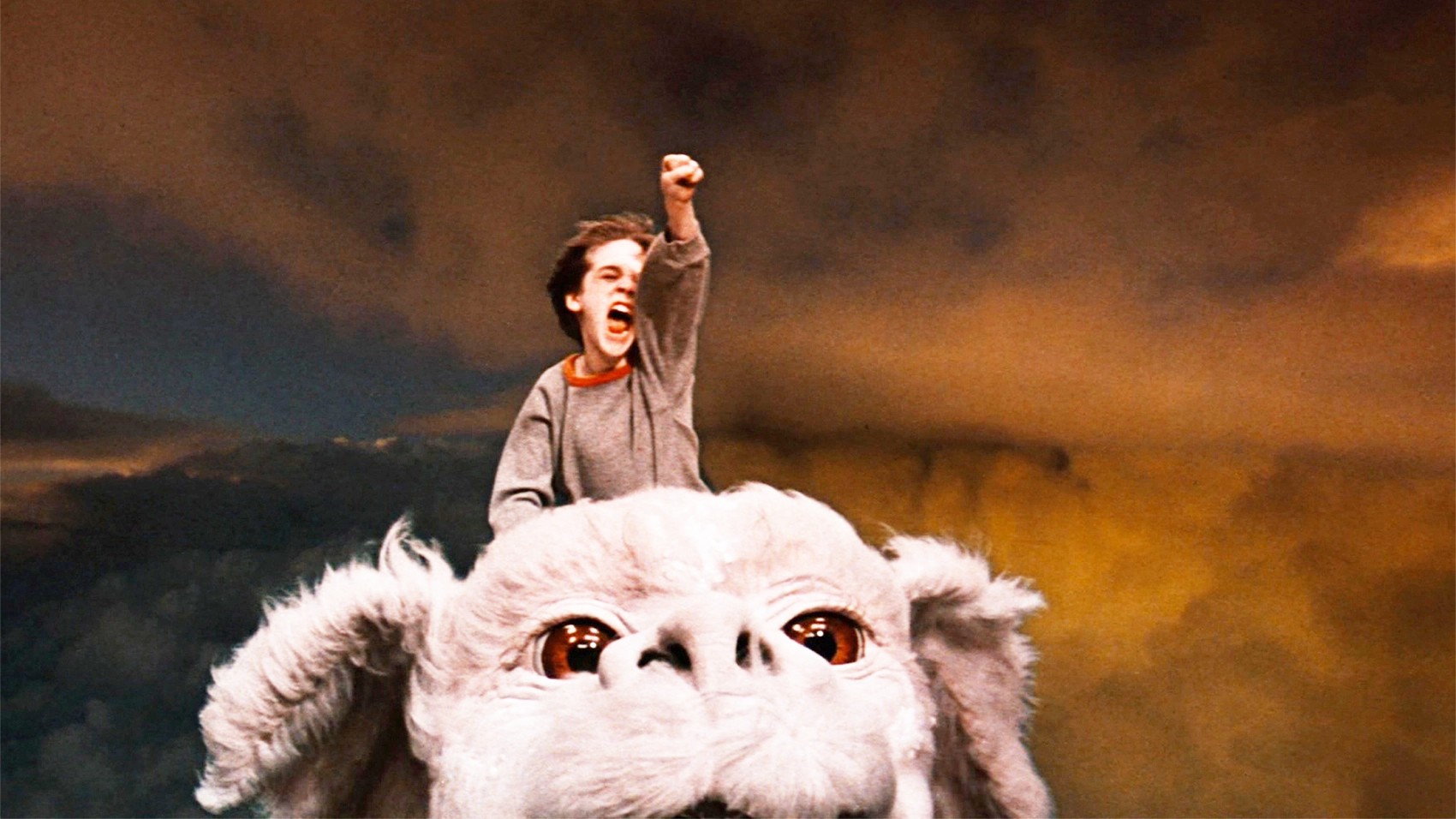 The Nothing is “the emptiness that’s left,” declares one of its servants. “Like a despair, destroying the world.” The film, like the book, is existential horror that children can understand. So, too, is the story's exploration of metafiction. As Bastian reads his book, he experiences the tale and discovers that he is being watched by all of us.
The Nothing is “the emptiness that’s left,” declares one of its servants. “Like a despair, destroying the world.” The film, like the book, is existential horror that children can understand. So, too, is the story's exploration of metafiction. As Bastian reads his book, he experiences the tale and discovers that he is being watched by all of us.
In one unforgettably traumatizing scene, the hero’s horse, Atrax, falls prey to The Nothing, sinking beneath muddy swamp water. To achieve this gasp-inducing effect, Petersen’s crew trained two horses to become accustomed to neck-deep immersion and to stand on an underwater lift that lowered them seemingly to their doom.
Made with practical effects (models, miniatures, matte paintings), The NeverEnding Story, which has been rereleased on 4K in cinemas to mark its 40th anniversary, often shows its age. (For an international version, producers replaced the original orchestral score with a synthesizer-driven one by Giorgio Moroder.) Yet the film casts a powerful hold on the dreams and nightmares of new generations. Its theme song popped up on Stranger Things.
It wasn't the only revelatory kids' film of the time. Labyrinth (1985) was a rare (for that time) female-centred fantasy film. A dreamy, young-for-her-years teenager, Sarah (Jennifer Connelly) rebels when ordered to babysit her infant half-brother. Written by Terry Jones of Monty Python fame and directed by Jim Henson, the movie is witty, musical, and filled with Henson’s puppet creations, a mix that might be overwhelming if not for a commanding central performance by David Bowie, who also wrote several of the film’s songs.
Connelly deftly portrays a girl on the verge of what novelists used to call “an interesting age". Still obsessed with fantasy books and games, Sarah is a puzzle to her stepmother, who wishes that she’d go on dates with boys. Stuck at home with her baby brother, Sarah lets her imagination, fueled by resentment, run wild. (Amusingly, and to the stepmother’s defence, baby Toby is a difficult, squally infant; the parents seem desperate to get a break from both kids). Labyrinth’s heroine, like Bastian, is grieving a loss, that of her estranged birth mother, an actress she idolizes. (Keen-eyed viewers notice that Sarah’s toy-filled bedroom features some photos and news clippings that suggest Mom is embroiled in a tabloid-worthy romance with a man who looks a lot like David Bowie.)
Seeing herself as an aggrieved Cinderella, Sarah sulks, then taunts the baby with a scary fairy story and wishes, aloud, that goblins should steal him away. Then: silence. Toby’s gone – and his abductor, the seductive Goblin King (Bowie, of course), lures Sarah into a quest to rescue him. (Pictured below: Jennifer Connelly, David Bowie)
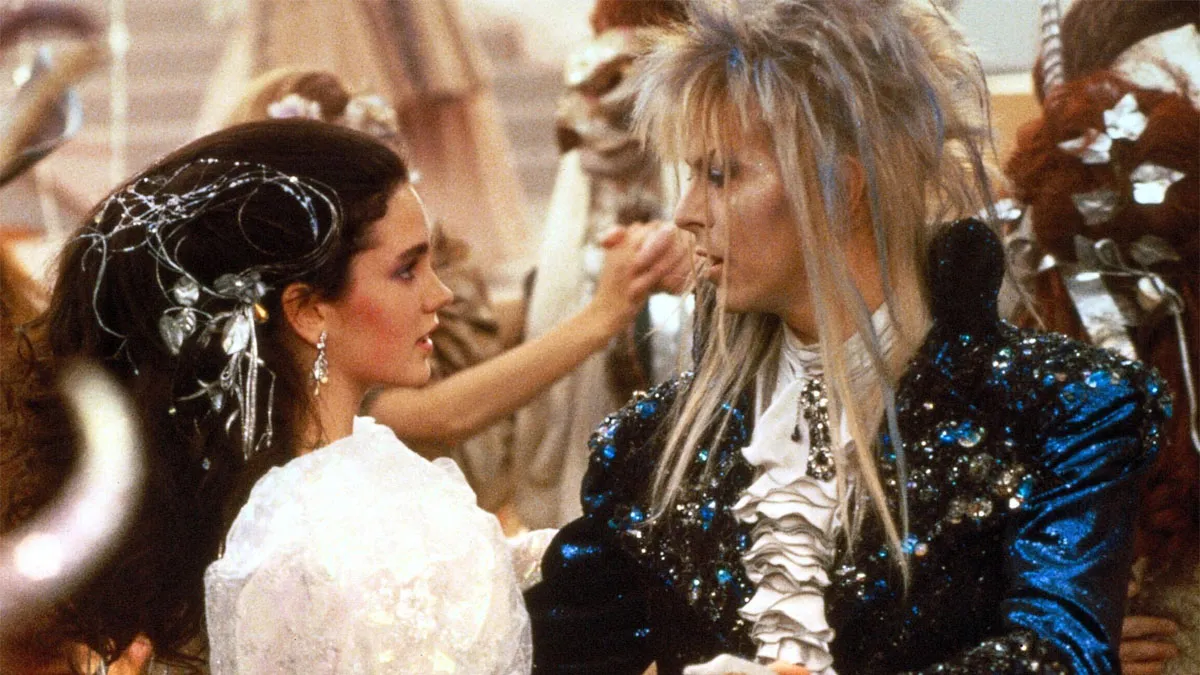 Lost in the labyrinth, Sarah – brainy and overconfident – faces an array of obstacles. In one strange sequence, she falls into a cavern guarded by disembodied hands that form chatty, finger-laced faces. Later she dares the dizzying heights of an M.C. Escher-like castle. Bowie, costumed in vaguely 18th Century garb (featuring an absurdly large codpiece), treads a fine line. Portraying the demon lover conjured by a teenager’s imagination, he’s at once predatory and preening, wounded and yearning.
Lost in the labyrinth, Sarah – brainy and overconfident – faces an array of obstacles. In one strange sequence, she falls into a cavern guarded by disembodied hands that form chatty, finger-laced faces. Later she dares the dizzying heights of an M.C. Escher-like castle. Bowie, costumed in vaguely 18th Century garb (featuring an absurdly large codpiece), treads a fine line. Portraying the demon lover conjured by a teenager’s imagination, he’s at once predatory and preening, wounded and yearning.
Sarah, like a willful modern Alice, conquers this world of seduction and illogic: “You have no power over me,” she declares, discovering that she, as the author of her fantasy, controls its outcome. In a delightful coda, she embraces her coming adulthood while still enjoying the powerful force of her childlike imagination.
Though Labyrinth was a flop on its original release, it soon found an audience as a video and cable TV favorite. Bowie’s film songs, including the addictive “Magic Dance” and “Underground", might not rank with his greatest hits, but they provide a bittersweet counterpoint to the lively visuals. “Don’t tell me the truth hurts, little girl,” he sings. “It hurts like hell.”
Then there was Legend (1985) and its world of faerie. Starring a pre-Top Gun Tom Cruise and directed by a post-Alien Ridley Scott, it was a curious choice for both. Made on a massive scale, the film’s made-up world has a texture and tangibility that many films of the genre lack. Legend’s enchanted forest air vibrates with raindrops, flower petals, and assorted flotsam.
The story’s hero, young Jack (Cruise), adores aristocratic Lily (Mia Sara, pictured below), a fickle lass with a taste for the forbidden. In one mesmerizing scene worthy of Cocteau, Lily, fascinated by a glittering necklace, falls into a wild dance with a masked mannequin clad in a metallic gown. In a flash, she’s corrupted – and wrapped in silver. As the villain Darkness, Tim Curry, disguised beneath a huge horned headpiece, looks like the devil from the Swedish horror essay film Haxan (1922), but beneath his menace is a schoolboy crush on Lily, who defies him at every turn.
Darkness’s real mission, though, is to consume all sunlight and cast a permanent gloom on the world. Only Curry could make a meal of dialogue like, “Was it not your sin that trapped the unicorn? Even now the evil seed of what you’ve done germinates within you.”
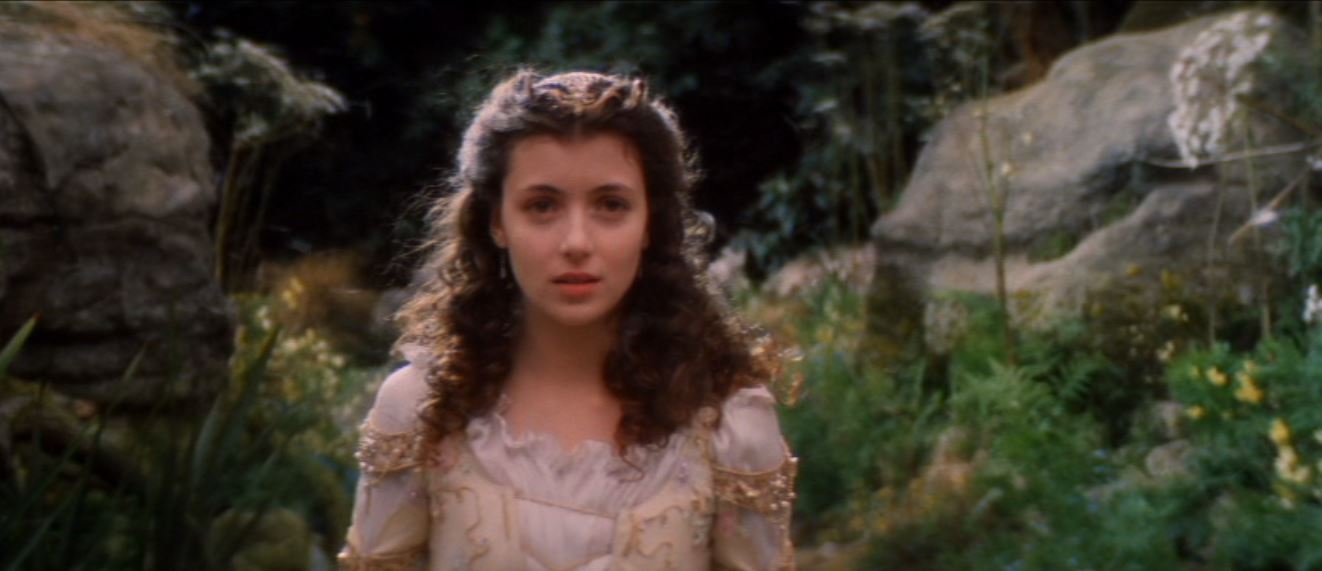 Scott, renowned now for how quickly he pulls together epics, spent more than a year filming Legend and faced studio interference with its final cut. Composer Jerry Goldsmith’s score was cast aside in favor of one by Tangerine Dream, and significant scenes got the chop. Critics hated Legend, but it, too, has a fervent following, not just because of its place in the Scott canon (it was only his third film) but also for its majestic production and costume design.
Scott, renowned now for how quickly he pulls together epics, spent more than a year filming Legend and faced studio interference with its final cut. Composer Jerry Goldsmith’s score was cast aside in favor of one by Tangerine Dream, and significant scenes got the chop. Critics hated Legend, but it, too, has a fervent following, not just because of its place in the Scott canon (it was only his third film) but also for its majestic production and costume design.
At times, Cruise has more chemistry with a supporting character, a sprite named Oona (Annabelle Lanyon), than he does with Lily. Critic Charles Taylor, writing for the Boston Phoenix, compared Cruise’s performance to that of an American football jock who’s been roped into a school production of A Midsummer Night’s Dream, and then discovers a love for theater. Several versions of Legend exist, from the original US theatrical cut to a director’s cut much preferred by Cruise and, obviously, Scott.
What was Scott’s attraction to the material? Perhaps it was the chance to explore his unique mastery of light in the fight against Darkness. Jack’s heroic, last-chance scheme to save the world – using reflective objects to cast a ray of sunlight deep into the villain’s abyss – is a marvel of inventive filmmaking, as inspiring, in its way, as the blinding battlefield sunrise in The Lord of the Rings: The Two Towers. Years after its first release, Scott wondered if he’d made Legend too soon, telling Total Film magazine, “Nowadays every damn film is a fantasy.” Maybe so. But no film looked more like a dream than Legend.

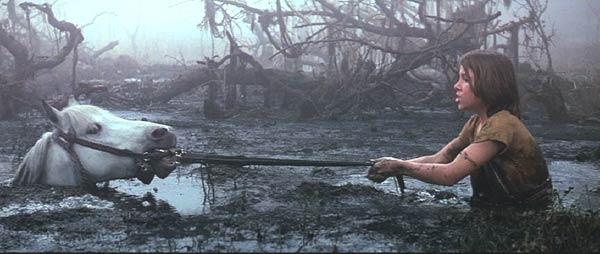




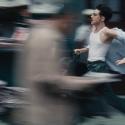








Add comment